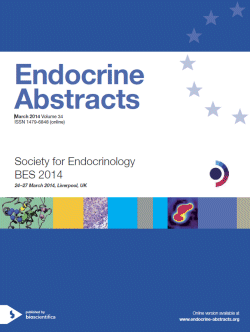Searchable abstracts of presentations at key conferences in endocrinology
Clinical Management Workshops
Workshop 3 (Supported by <emphasis role="italic">Clinical Endocrinology</emphasis>) Improving the care of young people in endocrinology
ea0034cmw3.1 | Workshop 3 (Supported by <emphasis role="italic">Clinical Endocrinology</emphasis>) Improving the care of young people in endocrinology | SFEBES2014
Adolescent health care in the UK in 2014
In spite of the first adolescent health clinic being established in Stanford in 1918, it is only in the last decade that specific national standards, professional societies and training in adolescent health have been developed and established in the UK. Over this time, the World Health Organization (WHO) has declared the health of young people a global health priority, concerned both by the growing burden of adolescent morbidity and mortality and the importance of adolescence ...
ea0034cmw3.2 | Workshop 3 (Supported by <emphasis role="italic">Clinical Endocrinology</emphasis>) Improving the care of young people in endocrinology | SFEBES2014
Adrenal replacement in adolescents and young adults
Classical congenital adrenal hyperplasia (CAH) due to 21-hydroxylase deficiency leads to glucocorticoid and mineralocorticoid deficiency. Management should be viewed as a process of care which requires input from an Inter-disciplinary Team. Glucocorticoid therapy should take the form of hydrocortisone in a starting dose of 1012 mg/m2 per day (divided into three or four doses) and the dose should be titrated to blood or urine profiles of cortisol and 17 hydroxy...
ea0034cmw3.3 | Workshop 3 (Supported by <emphasis role="italic">Clinical Endocrinology</emphasis>) Improving the care of young people in endocrinology | SFEBES2014
Optimising bone health in adolescents and young adults
Childhood and adolescence represents an important period for accrual of bone mass and therefore changes during this time have a potential influence on adult bone mass and risk of osteoporosis. It is known that between 33 and 46% of adult bone mineral content is accrued over a 4-year period of adolescent growth surrounding peak height velocity. Although genetic factors are the most significant influence, environmental factors such as nutrition, exercise including mechanical loa...




